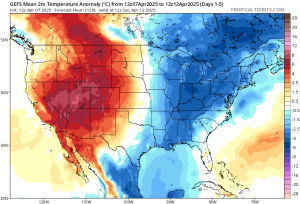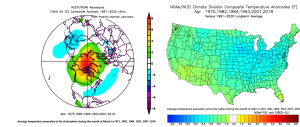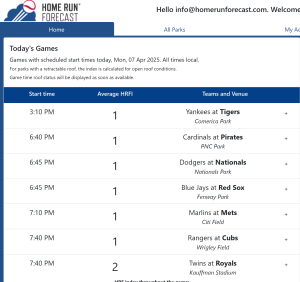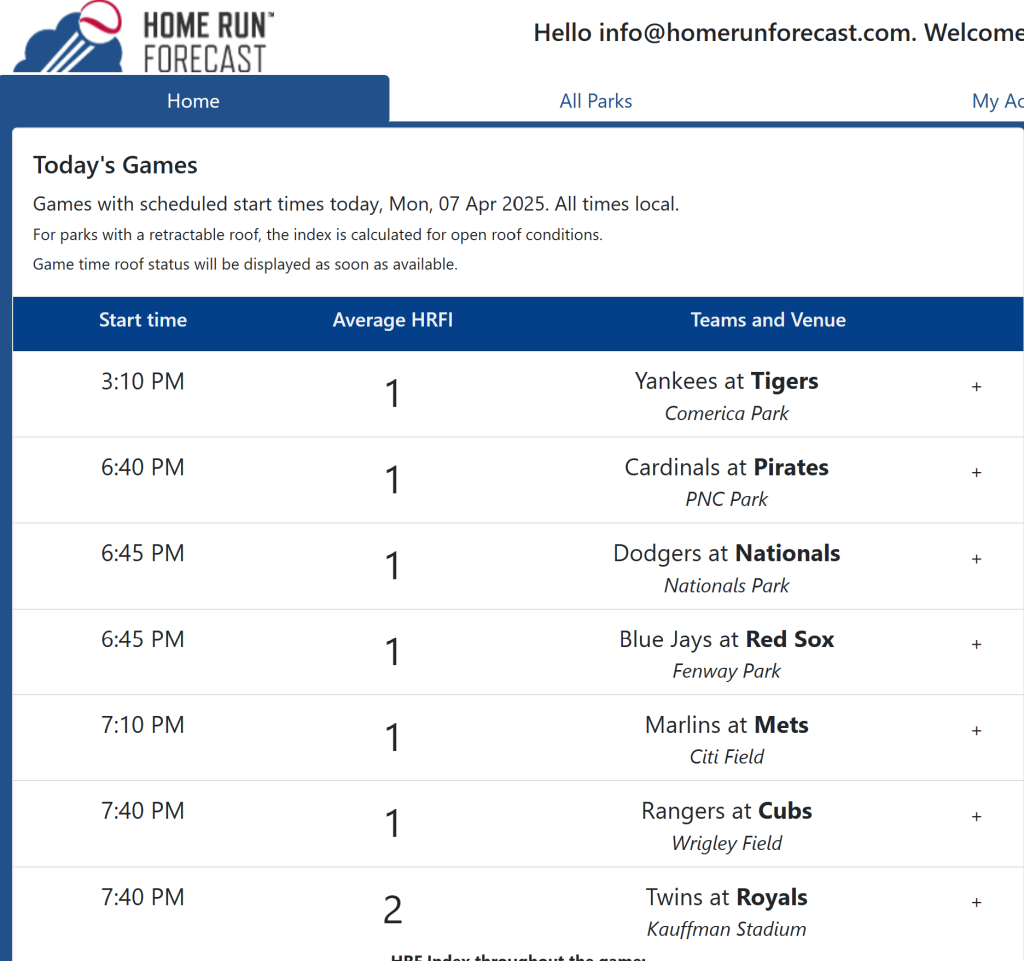
The next 5 days will feature well below-normal temperatures across the Great Lakes, Mid-Atlantic and Northeast US as predicted here by the 12Z GEFS for the 5-day period from today through April 12th. Map courtesy NOAA, tropicaltidbits.com
A stratospheric warming event that began in late February and continued through March is now doing its magic in the month of April with cold air outbreaks across the eastern and central US that should continue for at least another couple of weeks. And as predicted here several weeks ago, this atmospheric phenomenon will lead to numerous cold weather early season baseball games in the young 2025 season and plenty of low “Home Run Forecast Index (HRFI)” values. In fact, an unusually cold air mass exists today across the Great Lakes, Northeast US, and Mid-Atlantic and there is a plethora of games today, Monday, April 7th, that will feature cold weather conditions and low HRFI values…indicative of unfavorable weather conditions for the ball to carry. The HRF index is displayed for each hour and updated on an hourly basis and is calculated using stadium-specific weather conditions.

There have been six stratospheric warming events in recent history that took place during the month of March and the average 10-millibar temperature pattern in those years (left plot) is very similar to the current situation. The impact on US temperatures in each of those six years during the subsequent month of April was quite dramatic. In fact, the average temperature in those six years for the month April was below-normal across virtually the entire nation (right plot). Maps courtesy Weather Bell Analytics (Meteorologist Joe Bastardi, X), NOAA
Stratospheric warming is a naturally occurring phenomenon that can take place in any given winter in the northern hemisphere and perhaps even on more than one occasion. Typically, temperatures are very cold in the stratosphere over the polar region during the northern hemisphere winter, but periodically, significant warming takes place which can disrupt the polar vortex. In some cases, the polar vortex is displaced from its usual location near or over the pole, but it remains fully intact. In other cases, however, the polar vortex can break apart into multiple pieces and is considerably weakened…indeed, this is the pattern we are experiencing right now in the northern hemisphere polar region.

Here is a sampling of Home Run Forecast Index data for Monday, April 7th from our premium site with numerous games featuring an average of “1” on a scale of 1-10. This is the lowest HRF index value and suggests weather conditions will be most unfavorable for the ball to carry (i.e., unfavorable for the hitting of Home Runs and scoring runs).
When the polar vortex is disrupted during the northern hemispheric winter, it can set off a chain of events in the atmosphere that ultimately results in cold air masses being unleashed from the high latitudes onto the middle latitudes such as here in the US. History has shown that there tends to be a lag of several weeks from the beginning of the stratospheric warming event over the polar region to its eventual impact on US temperatures. In this particular case, the stratospheric warming event began during late February and continued through March increases the chance for colder-than-normal weather across the eastern half of the nation into at least the middle of April…and this will make for many more chilly baseball games during the early part of the 2025 baseball season.
Meteorologist Paul Dorian

